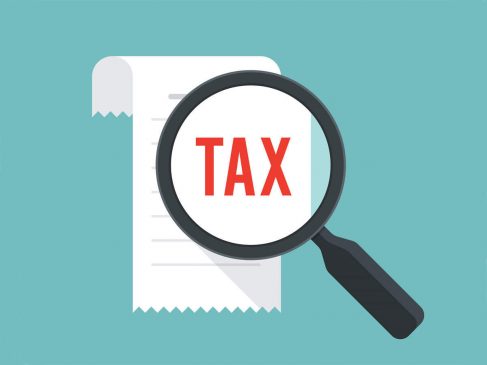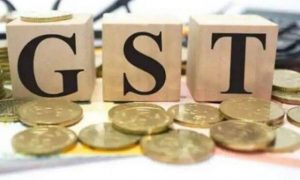he income tax return (ITR) forms a taxpayer has to use depends on the residential status of an individual and total income earned from various sources during the financial year (FY) 2020-21.
Who can use Form ITR-2?
Individuals and Hindu Undivided Families not having business or professional income can use Form ITR-2. Thus, persons with any of the following types of income/ fulfilling any of the below criteria are eligible to file Form ITR 2:
i) Salary Income.
ii) House property Income (can be more than one house property).
iii) Capital Gains.
iv) Income from Other Sources (including winning from lottery, bets on Race Horses and other legal means of gambling);
v) Foreign Assets/Foreign Income.
vi) Agricultural Income more than Rs 5,000; and
vii) Individuals qualifying as Not Ordinarily Resident and Non-Resident during the relevant FY.
ITR filing mode
A taxpayer may choose to fill the Form ITR-2 in either online or offline mode. In the offline mode, one needs to use the JSON utility (available on the tax department’s e-filing portal) to fill the details before uploading the same on the income tax website to complete the filing process.
In the online mode, ITR-2 Form comes with certain pre-filled information such as personal details of the taxpayer along with details of salary income, dividend income, interest income, capital gains, etc., and the form can be downloaded from either the government’s income-tax e-filing portal or from other tax filing websites.
In the offline mode, prefilled xml can be downloaded from the income-tax website and imported by using JSON utility to make further edits in the form. However, due to glitches in the government’s income tax website it would be prudent for the tax filer to cross-check the pre-filled information in both the online or offline mode as well.
Documents/papers needed to file ITR
It would help taxpayer to have all the documents pertaining to his/her incomes/specified investments, expenditures/pre-paid taxes etc. handy.
Key steps to fill ITR-2 (online mode) for taxpayer having income from salary, capital gains and other sources
Go to www.incometax.gov.in and login with your credentials.
1. Go to E-File > Income Tax Returns -> ‘File Income Tax Return’ to be selected from the menu.
2. Select the Assessment Year, applicable status and ITR Form and click on “Let’s get started”. Here we have chosen online method for filing ITR-2.
3. Select the applicable reason for filing the return of income as shown below and select ‘Continue.’ Here we have selected ‘Taxable income is more than basic exemption limit’.
4. On the next page, the taxpayer would see different schedules bifurcated into 5 categories under ‘Select Schedule’: General, Income, Deduction, Tax and Others. Though broadly applicable schedules like salary, house property, deductions etc. are selected in the prefilled ITR by default, one must (on one’s own) select all the specifically applicable schedules like Schedule FA, AL, Exempt Income etc. basis his/her source of income, disclosure and reporting requirements and click on “Continue”.
In the next page “Proceed to schedule questions”, click on “Continue”.
5. General Information: The taxpayer is required to select whether he/she wishes to opt for the new tax regime. Upon confirming click on Continue as shown below:
6. Salary Exemption: In this tab, the taxpayer is required to select the eligible salary exemptions (for e.g. House Rent Allowance, Leave Travel Allowance etc.) and click on ‘Continue’ to proceed further. Taxpayer also has an option to skip these questions and the ITR form would capture the exemption details from Form 16 directly, however, if any exemption has not been claimed via taxpayer’s payroll, then it would have to be specifically mentioned under respective question. If not done here, then taxpayer will not get chance to claim such tax exemption in the future.
7. Deduction: In this tab, the taxpayer is required to select the eligible deductions (for e.g. Life Insurance Premium, Medical Insurance Premium etc.) and click on ‘Continue’. Taxpayer also has an option to skip these questions and the ITR form would capture the deductions from Form 16 directly, however, if any deduction has not been claimed via taxpayer’s payroll, then it can be claimed by filling Schedule Deduction. Do keep in mind that these deductions can be claimed only if you have opted for old tax regime in the first tab. If you have opted for new tax regime, then you cannot claim any deductions except for deduction under Section 80CCD (2).
8. The next page will have a summary of all schedules, and one has to validate the same to proceed further.
Information to be validated in respective schedules has been summarised below:
- Part A – General Information: In this section, one must verify the pre-filled data from his/her e-filing profile. The taxpayer will not be able to edit some of the personal data in the form, however, can make the necessary edits in their e-filing profile. Contact details, filing status, residential status and bank details will be pre-filled in this form.
- Schedule Salary: This information would be pre-filled from Form 16; thus, taxpayer should verify that the salary income, tax exemptions and deductions as claimed via the employer have been captured accurately. Also, breakdown of salary into various components like basic salary, House Rent Allowance, Conveyance allowance, perquisites etc. are required to be provided in this schedule mandatorily.
- Schedule Capital Gains: Capital Gains arising from sale/transfer of different types of capital assets have been segregated. Hence, one must select type of capital asset sold/transferred as shown below and then click on continue to enter the transaction details. In a case where capital gains arises from sale or transfer of more than one capital asset, which are of same type (like from sale of securities including foreign shares and/or equity shares of a domestic company), a consolidated computation of capital gains in respect of all such capital assets of same type has to be entered. But in case of transfer of land / building, it is mandatory to enter the computation towards each asset separately. Also, if equity shares of a company or an equity-oriented fund or a unit of a business trust on which STT is paid are bought on or before 31st January 2018, it is mandatory to enter scrip-wise details of each transfer under Schedule 112A as shown below.
- Schedule Income from other sources – Interest from fixed deposits, savings interest, dividend income etc. are required to be filled in this schedule. Further, dividend income is required to be reported quarter-wise as shown below:
- Schedule Carry Forward Losses (CFL): If the taxpayer has any carry forward losses from past years, then this schedule has to be filled diligently in order to compute set-off from current year income and balance would be carried forward to future years for set-off. One should select relevant AY and fill carry forward losses from previous year ITR (filed on or before the due date), category wise as mentioned below:
- Taxes Paid: Details in this tab would be pre-filled from Form 26AS with TDS, TCS, advance-tax and Self-Assessment Tax (SAT), if any, paid by the taxpayer. The taxpayer should validate the details and click on Confirm.
- Part B TTI: It is the computation of tax liability on total income and the taxpayer can view the tax summary (Nil payable / refund) of the tax return.
Once all the schedules are “Confirmed” and Part B TTI is verified, the taxpayer has to click on “Preview Return” where he/she can download the ITR and then click on “Next” for the declaration tab.
- Declaration tab: The taxpayer is required to fill requisite details in the declaration confirming that all details provided in the return are accurate and complete and click on ‘Proceed to Validation’. If a list of errors are shown in the return, taxpayer needs to go back to the form to correct the errors. If there are no errors, he can proceed to e-verify return by clicking “Proceed to Verification”.
One can retrieve the acknowledgement (ITR-V) manually from the income tax website.
9. Verification
After successful validation, the taxpayer may proceed to very tax return either electronically through net banking, Aadhaar OTP etc. or can sign a physical printout of ITR V manually and send it to the CPC, Income Tax Department, Bengaluru within 120 days of e-filing the return.
While a few schedules of the ITR-2 form are pre-filled, it is important to carefully verify every aspect and modify the same as necessary. One can also refer the list of documents, FAQs, and other relevant reading material available on the portal, to file the tax return conveniently. It is important for taxpayers to appropriately fill and verify the data in the tax return before proceeding to upload the tax return on the website-filing portal.



































